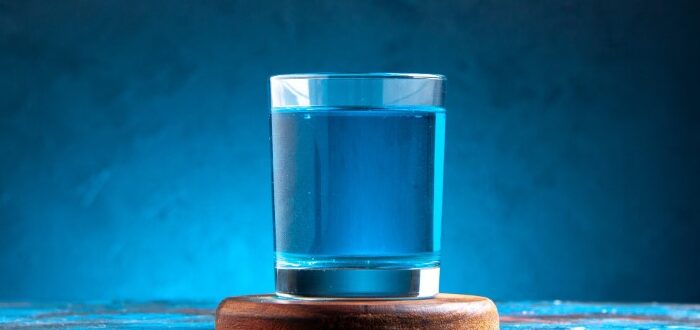WATER PURIFICATION – THE NEED OF THE HOUR
It is true that the water that flows out of taps in the majority of countries now is safe and clean. However, there is still cause to be worried. Here are some eye-opening facts:
As per a 2012 UN Study, 11 percent of the global population (783 million people) as yet don’t have access to potable water.
Owing to the fact that people utilize water for activities such as washing and waste disposal, and irrigating crops, it is easy for sources of water near a human population to get contaminated. By 2025, there will a major shortage of clean water in places such as Africa, India, China and The Middle East.
Here are some of the latest technologies in water purification technologies:
Aquaporins for UPW (ultrapure water) in an energy efficient way
There is a growing industrial thirst for “ultrapure” water (UPW) but, unfortunately, water filtration methods prove to be very unsustainable and energy consuming. Enter Aquaporin, the winner of the European inventor award 2014. The invention uses the natural movement of water between single cells in nature and the features of the proteins assisting this movement. The proteins termed aquaporins, enable water to move between cell membranes, while obstructing the passage of contaminants such as minerals and salts. The inventors included this principle in a “biomembrane” technology.
The usual water filtration methods guide contaminated water through a set of increasingly fine-pored filters at powerful pressures; a greatly energy-consuming process, more complicated by the possibility of pores becoming clogged. With respect to the new invention, it utilizes the process of “forward osmosis” for carrying water molecules through a membrane involving aquaporins merged in a backing layer.
The Aquaporin filters are already delivering an energy-saving technique for purifying water into the ultra pure state for industrial applications. The next step would involve the technology being applied to large-scale purification plants to purify industrial wastewater and desalinate seawater – a major contribution to drinking water supplies across the globe.
A microorganism to eat the pollutants
A research and development company in Ontario, Canada is modifying the way waste water is treated. As of August 2014, the company – Noble Purification was rolling out a filtration system (The Euglena BioFiltration System) utilizing a microorganism that consumed pollutants in water. The first system was to be installed in Peterborough.
By way of research that the now CEO of the company carried out for the Canada Wide Science Fair when still in high school, Adam Noble discovered Euglena’s capability to treat waste water. A recent breakthrough revealed that Euglena can absorb a number of carried pollutants in water, ranging from phosphates to lead. The system works by producing a controlled algae bloom within waste water and then “fooling” the Euglena into absorbing heavy metals, minerals, pollutants and nutrients from the environment.
The company hoped to finish the first large-scale Euglena BioFiltration model with its partners – The Centre for Alternative Wastewater Treatment, Drain Brother’ Excavating and The City of Peterborough. The model would treat around 100,000 liters of waste water each day at the Peterborough Waste Water Treatment Plant and would sequester around 32 tons of CO2 from the atmosphere. Noble Purification also announced the start of a Euglena Research Program (ERP) at Trent University. This program is designed to be a joint venture that would bring together the combined abilities of Trent researchers and students to better comprehend the unharnessed potential of Euglena. This would assist with enhancing the effectiveness of the purification technology and present a chance to sequence its genome.
OTHER ADVANCEMENTS IN WATER PURIFICATION TECHNOLOGIES
Slingshot
The water purification device called Slingshot was developed by Dean Kamen. The device is powered by a Stirling engine running on a combustible fuel source. Slingshot claims to create drinking water from nearly any source (seawater, sewage or chemical waste) however dirty, by way of vapor compression distillation. It can work using cow dung as fuel and does not need any filters. The name of this purification device comes from the slingshot that David utilized to defeat Goliath.
A single Slingshot has the ability to purify over 250,000 liters of water each year that is adequate to satisfy the requirements of approximately 300 people. Thus, the invention has the potential to give millions of people access to clean water.
Tata Swach
The Tata Swach is a water purifier designed by TRDDC (Tata Chemicals and Tata Research, Development and Design Centre). Swach is a water purification machine targeting mainly low-income population in India who are short of access to clean drinking water. The product is marketed in three variants – Tata Swach Smart Magic, Tata Swach Smart and Tata Swach.
In the system, processed rice husk ash impregnated with nano silver particles is utilized to purify the water and to obliterate disease causing germs, bacteria, and others. Silver’s bactericidal and bacteriostatic properties can be credited to its capability of reacting with sulfhydryl groups in the cells ofbacteria that creates the structural modifications in the cell membranes of bacteria and communicates with nucleic acids. Through the very small particles (nano-size), the surface area increases enabling the bacteria to get adequate reaction time.

